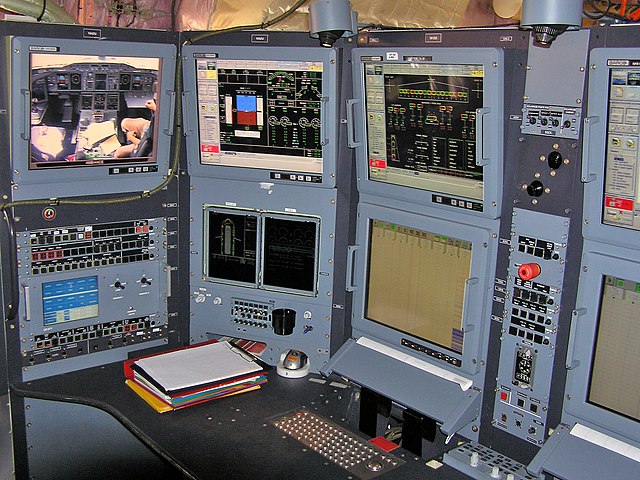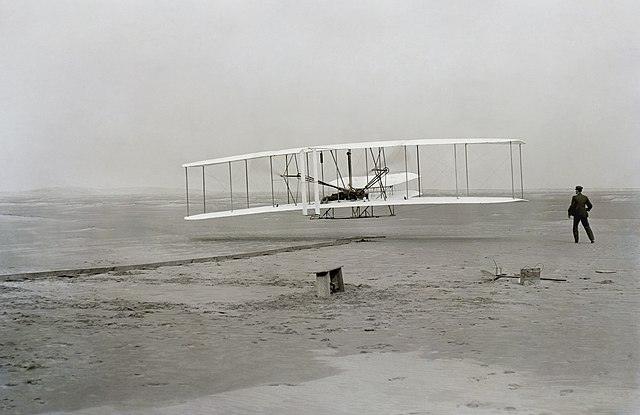Flight testing is a branch of aeronautical engineering that develops specialist equipment required for testing behaviour and systems of aircraft or testing the atmospheric phase of launch vehicles and reusable spacecraft. Instrumentation systems are developed using proprietary transducers and data acquisition systems. Data is sampled during the flight of an aircraft, or atmospheric testing of launch vehicles and reusable spacecraft. This data is validated for accuracy and analyzed to further modify the vehicle design during development, or to validate the design of the vehicle.
Static pressure probe on the nose of a Sukhoi Superjet 100 prototype
Pressure measurement equipment and water tanks in Boeing 747-8I prototype
Static pressure probe rig aboard Boeing 747-8I prototype; a long plastic tube, shown wound round a storage drum, is connected to a probe with static pressure orifices. The probe is trailed about two wing spans behind the aircraft.
Flight test engineer's workstation aboard an Airbus A380 prototype
Aerospace engineering is the primary field of engineering concerned with the development of aircraft and spacecraft. It has two major and overlapping branches: aeronautical engineering and astronautical engineering. Avionics engineering is similar, but deals with the electronics side of aerospace engineering.
NASA engineers, seen here in mission control during Apollo 13, worked to ensure the safety of the operation and astronauts onboard
Orville and Wilbur Wright flew the Wright Flyer in 1903 at Kitty Hawk, North Carolina.
A F/A-18F Super Hornet in flight, 2008
Wernher von Braun, with the F-1 engines of the Saturn V first stage at the US Space and Rocket Center








